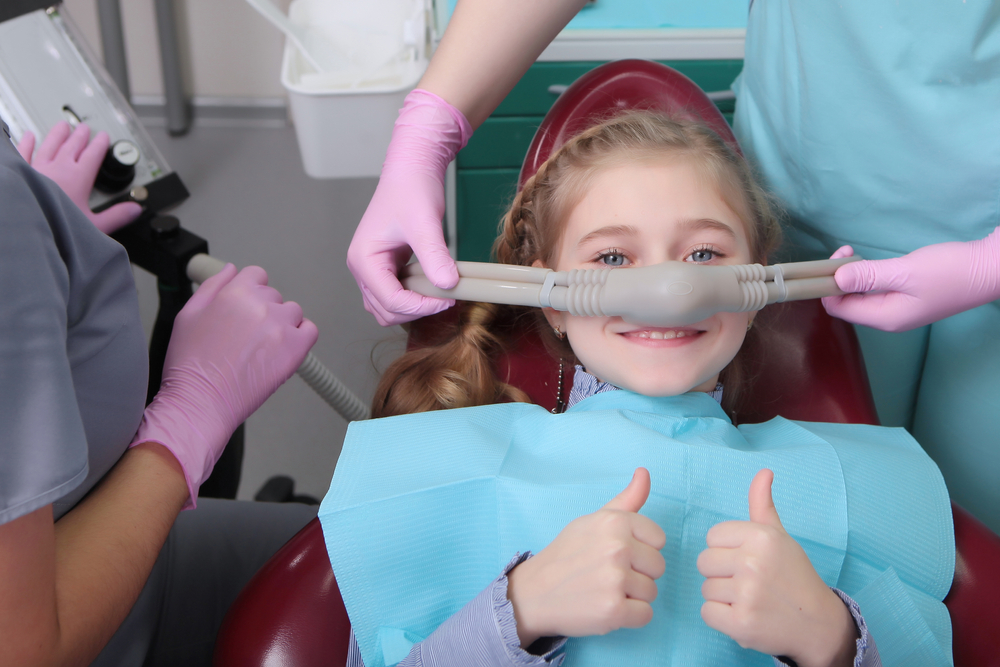Dental procedures can be a source of anxiety and fear for many individuals, often due to concerns about pain and discomfort. Sedation dentistry offers various options to ensure a comfortable and stress-free dental experience. Understanding the different sedation methods available can help you make informed decisions and alleviate your fears during dental visits.
What is Sedation Dentistry?
Sedation dentistry involves the use of medication to help patients relax during dental procedures. It is not the same as general anesthesia, which renders the patient completely unconscious. Instead, sedation dentistry ranges from mild relaxation to deeper levels of sedation, depending on the patient’s needs and the complexity of the procedure.
Types of Sedation Options
- Nitrous Oxide (Laughing Gas)
- Description: Nitrous oxide is a mild sedative inhaled through a mask placed over the nose.
- Effects: It induces a state of relaxation without causing drowsiness. Patients remain awake and responsive.
- Benefits: Quick onset and recovery, minimal side effects, and adjustable levels of sedation make it a popular choice for those with mild anxiety.
- Oral Sedation
- Description: Oral sedatives are taken in pill form before the dental appointment.
- Effects: They provide a deeper level of relaxation than nitrous oxide, making patients drowsy but still partially conscious.
- Benefits: Easy to administer and effective for patients with moderate anxiety. Dosage can be adjusted based on individual needs.
- Intravenous (IV) Sedation
- Description: IV sedation involves administering sedative medications directly into the bloodstream through a vein.
- Effects: It induces a deeper level of sedation, allowing patients to remain conscious but significantly relaxed.
- Benefits: Provides rapid and controlled sedation, ideal for complex or lengthy procedures and patients with severe anxiety.
- General Anesthesia
- Description: General anesthesia renders the patient completely unconscious during the procedure.
- Effects: Patients are entirely unaware of the procedure and do not feel any pain.
- Benefits: Suitable for extensive dental work, patients with extreme anxiety, or those unable to cooperate during treatment.

Choosing the Right Sedation Method
Selecting the appropriate sedation option depends on several factors:
- Level of Anxiety: Mild anxiety may be managed with nitrous oxide, while severe anxiety might require IV sedation or general anesthesia.
- Type of Procedure: Complex or lengthy procedures may necessitate deeper sedation to ensure patient comfort.
- Medical History: Certain health conditions may influence the choice of sedation method. It’s essential to discuss your medical history with your dentist.
- Personal Preference: Some patients may prefer oral sedation over IV sedation for convenience and comfort.
Preparing for Sedation Dentistry
Proper preparation ensures a safe and effective sedation experience:
- Consultation: Discuss your fears, medical history, and preferences with your dentist to determine the most suitable sedation method.
- Pre-Appointment Instructions: Follow any pre-appointment guidelines provided by your dentist, such as fasting requirements for certain sedation types.
- Transportation Arrangements: Depending on the sedation level, you may need someone to accompany you to and from the appointment, especially if deeper sedation is used.
Safety Considerations
Sedation dentistry is generally safe when administered by qualified professionals. Dentists receive extensive training in sedation techniques and patient monitoring to ensure safety. However, it’s crucial to disclose your complete medical history and any medications you’re taking to minimise risks.
Benefits of Sedation Dentistry
- Reduced Anxiety and Fear: Sedation helps alleviate the dental anxiety associated with dental procedures, making visits more manageable.
- Enhanced Comfort: Patients experience minimal discomfort during treatments, allowing dentists to perform procedures more effectively.
- Shorter Appointments: Sedation can make procedures more efficient by keeping patients calm and still.
- Improved Treatment Outcomes: Relaxed patients are more cooperative, leading to better treatment outcomes and overall satisfaction.
Conclusion
Sedation dentistry offers a range of options to make dental visits more comfortable and less intimidating. Whether you have mild anxiety or require deeper sedation for complex procedures, understanding the available sedation methods can help you choose the best approach for your needs. Consult with a Comfort-Focused Dentist to explore the most suitable sedation options and ensure a pain-free and positive dental experience. Embracing sedation dentistry can transform your relationship with dental care, leading to better oral health and a more confident smile.


